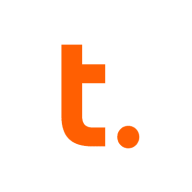

Teradata and Microsoft Analytics Platform System compete in data warehousing and analytics. Microsoft often has the upper hand due to its robust features and integration capabilities, which are perceived to justify its cost.
Features: Teradata is known for handling complex queries, scalability, and its Massively Parallel Processing architecture which enables fast query execution. It also offers capabilities like real-time analytics and efficient data management. Microsoft Analytics Platform System integrates SQL Server with Big Data capabilities, offering an extensive and versatile solution. Its seamless integration with other Microsoft products and user-friendly environment adds to its comprehensive feature set.
Room for Improvement: Teradata could improve by enhancing its user interface for less technical users and expanding its cloud offerings to better match current trends. Additionally, integration with more third-party platforms could be streamlined. Microsoft Analytics Platform System could focus on reducing the complexity of deployment options and further optimizing resource usage for varied workload types. Simplifying the cost structure and offering more flexible pricing packages could enhance its appeal.
Ease of Deployment and Customer Service: Teradata offers multiple deployment options including on-premise, cloud, and hybrid models, paired with solid customer support. Microsoft Analytics Platform System is noted for its integration within the Microsoft ecosystem, contributing to seamless deployment. While both offer substantial customer support, Microsoft's alignment with its broader suite simplifies user experiences in enterprise environments.
Pricing and ROI: Teradata's pricing is seen as more competitive, providing a good ROI due to its strong data processing capabilities. It is considered cost-effective for enterprises with large data analytic needs. Microsoft Analytics Platform System may have a higher initial investment, but it often delivers long-term value through its extensive features and integration, leading to potentially higher long-term ROI for enterprises that require comprehensive data solutions.
| Product | Market Share (%) |
|---|---|
| Teradata | 12.1% |
| Microsoft Analytics Platform System | 1.6% |
| Other | 86.3% |


| Company Size | Count |
|---|---|
| Small Business | 4 |
| Large Enterprise | 7 |
| Company Size | Count |
|---|---|
| Small Business | 26 |
| Midsize Enterprise | 12 |
| Large Enterprise | 49 |
Teradata is a powerful tool for handling substantial data volumes with its parallel processing architecture, supporting both cloud and on-premise environments efficiently. It offers impressive capabilities for fast query processing, data integration, and real-time reporting, making it suitable for diverse industrial applications.
Known for its robust parallel processing capabilities, Teradata effectively manages large datasets and provides adaptable deployment across cloud and on-premise setups. It enhances performance and scalability with features like advanced query tuning, workload management, and strong security. Users appreciate its ease of use and automation features which support real-time data reporting. The optimizer and intelligent partitioning help improve query speed and efficiency, while multi-temperature data management optimizes data handling.
What are the key features of Teradata?In the finance, retail, and government sectors, Teradata is employed for data warehousing, business intelligence, and analytical processing. It handles vast datasets for activities like customer behavior modeling and enterprise data integration. Supporting efficient reporting and analytics, Teradata enhances data storage and processing, whether deployed on-premise or on cloud platforms.
We monitor all Data Warehouse reviews to prevent fraudulent reviews and keep review quality high. We do not post reviews by company employees or direct competitors. We validate each review for authenticity via cross-reference with LinkedIn, and personal follow-up with the reviewer when necessary.